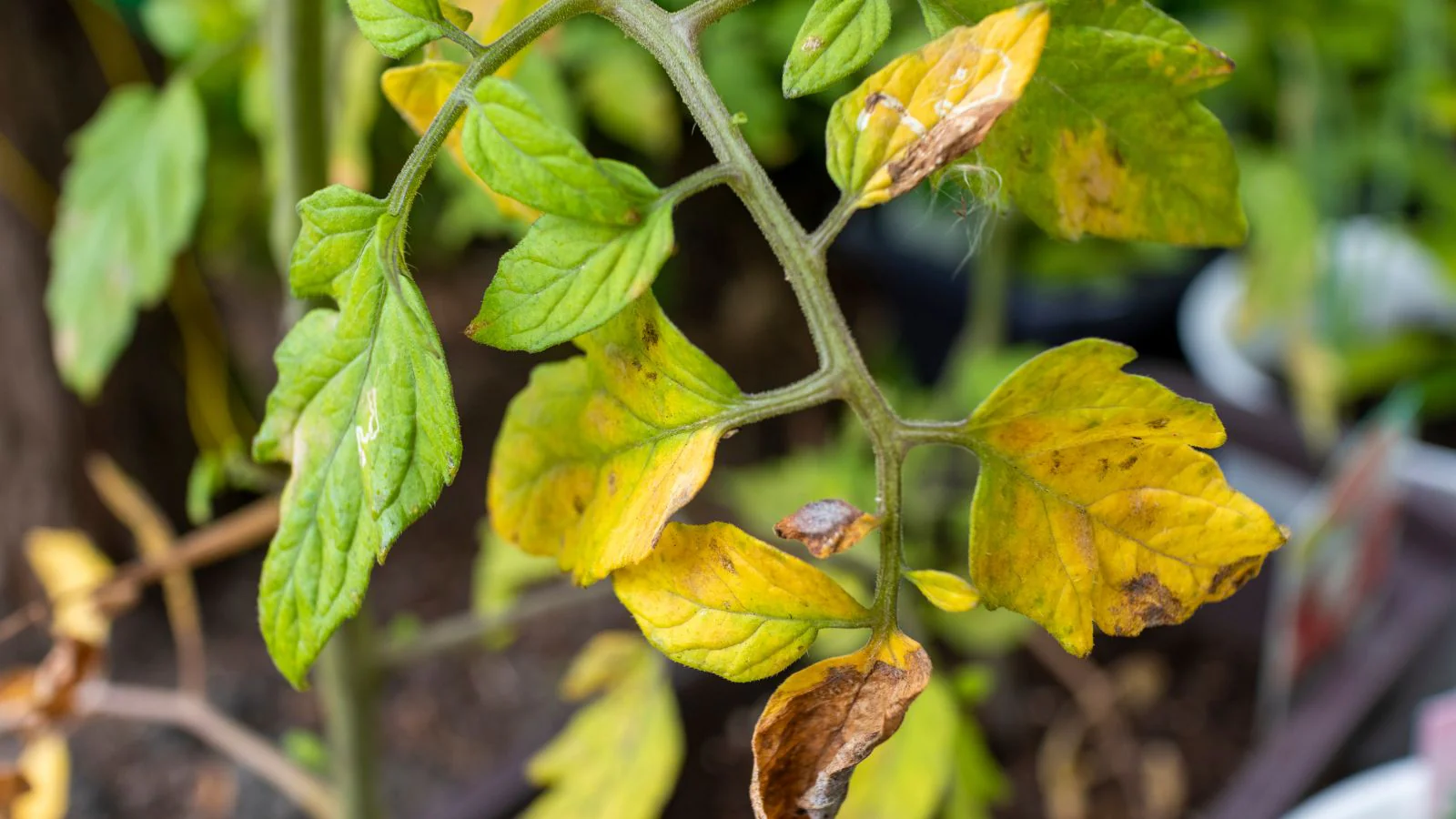There are numerous underlying factors that can interfere with a plant’s ability to produce sufficient chlorophyll, resulting in leaves that appear more yellow than vibrant green. In addition to nutrient deficiencies, yellowing foliage may also be triggered by pest infestations, plant diseases, or it could simply represent the natural aging process of the leaves.
Continue reading for an in-depth exploration of the potential causes behind your outdoor plant’s yellowing leaves and to determine whether corrective measures can be taken to restore your plant’s health.
1. Insufficient Exposure to Adequate Sunlight
Sunlight plays a fundamental role in the photosynthesis process, which means plants that do not receive enough natural light may develop pale or yellowish leaves. It is important to research the specific sunlight requirements of your distressed plant to determine whether it thrives in full sun exposure or can adapt to partial shade conditions.
For plants grown in containers, the solution may be as straightforward as relocating the pot to an area with better sunlight. Addressing lighting issues for plants rooted directly in the ground presents greater challenges. If surrounding trees or shrubs are casting excessive shade, selective pruning may improve light penetration. If pruning is not a viable option, the only remaining solution may involve carefully transplanting the affected plant to a sunnier location.
2. Underwatering and Its Impact on Leaf Coloration
The development of yellow leaves frequently serves as an early indicator that a plant is not receiving sufficient water. Even a short period of hot weather combined with inadequate watering can trigger noticeable yellowing in plant foliage.
If your plant exhibits yellow leaves alongside other signs of drought stress, implement a thorough but gradual watering routine. Repeat watering sessions as necessary to maintain consistent soil moisture levels without causing waterlogging.
3. The Negative Effects of Excessive Watering on Plant Health
While underwatering causes problems, overwatering can be equally detrimental, often manifesting through yellowing leaves. Heavy clay soils with poor drainage are particularly problematic as they become densely compacted during rainy periods, leading to water saturation that displaces vital oxygen from the root zone. This oxygen deprivation frequently results in root rot and subsequent leaf discoloration.
To prevent these issues, avoid planting in poorly drained areas or undertake soil amendment projects before planting. For gardens with persistent drainage challenges, constructing raised planting beds often provides an effective alternative solution.
4. Nutritional Deficiencies That Lead to Chlorotic Foliage
While nitrogen deficiency is the most commonly recognized nutritional cause of yellow leaves, several other mineral shortages can produce similar symptoms, including insufficient iron, manganese, or zinc availability in the growing medium.
Conducting a comprehensive soil analysis represents the most reliable diagnostic approach. These test results will identify specific nutrient deficiencies, enabling you to formulate an appropriate fertilization strategy tailored to your plant’s exact requirements.
5. Alkaline Soil Conditions and Their Effect on Nutrient Availability
Leaf yellowing frequently occurs when plants are grown in excessively alkaline soil conditions (pH above 7). In high pH environments, iron becomes chemically locked and unavailable for plant uptake. This explains why acid-loving species such as blueberries, rhododendrons, and azaleas struggle in alkaline soils and require specific pH conditions to thrive.
For optimal results, combine standard soil testing with pH analysis. This dual approach allows you to address nutrient deficiencies while simultaneously correcting pH imbalances through sulfur applications, which help liberate bound nutrients for plant absorption.
6. Damage Caused by Over-Fertilization and Salt Accumulation
Visible leaf burn or scorching patterns often indicate excessive fertilizer application. This damage typically occurs through two distinct mechanisms:
- High concentrations of soluble salts in fertilizers can create osmotic imbalances that extract moisture from root tissues
- Direct contact between concentrated fertilizer products and foliage can cause localized tissue damage
Plant sensitivity to fertilizer burn varies significantly between species, with damage potential increasing during periods of hot, dry weather. Always apply fertilizers cautiously, avoiding leaf contact, and irrigate thoroughly immediately after application to distribute nutrients and reduce salt concentration.
When uncertain about proper fertilization rates, conducting a follow-up soil test provides valuable guidance for future applications.
7. Phytotoxicity from Improper Pesticide and Herbicide Applications
Applying pesticides or herbicides during suboptimal conditions (temperatures exceeding 85°F, high humidity, or overcast weather) frequently results in leaf burn symptoms. Plants already stressed by drought, frost, pest activity, or disease show increased susceptibility to chemical damage.
Once phytotoxic symptoms appear, the only recourse involves removing affected plant parts to prevent secondary infections.
Whether using organic or conventional pesticide formulations (including insecticidal soaps), always choose application days with cool, dry, and calm atmospheric conditions. These parameters ensure rapid drying of applied products while minimizing vapor drift caused by wind or thermal air currents.
These same application principles apply equally to herbicide products.
8. Fungal Pathogens and Bacterial Infections That Cause Yellowing
Tomato growers should maintain particular vigilance for two destructive fungal diseases whose initial symptoms include leaf yellowing:
- Early Blight: Characterized by expanding lesions surrounded by yellow halos that eventually coalesce
- Fusarium Wilt: Typically manifests as unilateral yellowing, often affecting just one side of the plant or individual branches

